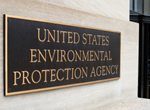
TPrimarily, the average citizen is not able to identify anything beyond the most blatant environmental problems. For example, an EPA brochure, Reporting Environmental Regulations, informs aspiring citizen inspectors that possible signs of an environmental violation include:
- Strong, offensive, or unusual chemical odors;
- Large numbers of dead animals, including birds or fish;
- Pipes or valves that bypass wastewater treatment systems;
- Tank trucks discharging into drains, manholes, or surface waters;
- Oily slicks on bodies of water;
- Corroded, leaking waste containers; and
- Barrels dumped at odd hours in remote areas.
The EPA will also direct citizens to specific issues. One Agency webpage provides forms and other means to report possible violations of wetland, hydraulic fracturing, and lead paint regulations.
What records must be kept on hand and for how long? Find out now with our Free Special Report, Recordkeeping for EHS Managers. Also receive 2 trial issues of BLR’s Environmental Manager’s Compliance Advisor! Download Your Free Report
Citizen Expertise
Generally, these types of violations or evidence of violations are associated with entities that are intentionally disobeying environmental laws and regulations. Such entities certainly exist, but they constitute a very small percentage of law-abiding businesses. This does not comfortably corroborate with the tens of thousands of citizen tips fielded by environmental agencies each year. In other words, the much lower number of tips that result in enforcement actions suggests that the activities being reported by most citizens are either not violations or are not violations that the agencies choose to pursue.
There is also some question about the amount of resources an agency will commit to a citizen tip. EPA’s September 2011 Toxic Substances Control Act Compliance Monitoring Strategy says: “Inspections based on tips should constitute a minor component of the [EPA] Region’s pro-active targeting regime, since the Region can only react to tips.” That vague statement suggests that the EPA is more comfortable committing resources to potential violations it finds on its own to those that hinge on information developed by those outside the Agency.
Tip Quality
The actual response to a tip will be based on multiple factors. The Agency must first endeavor to determine the quality of the tip. This is done by considering the source of the tip; its timeliness (whether the violation is ongoing or recent, versus long ago); the alleged violator (e.g., size, sophistication, compliance history); and the nature of corroborating information. The Agency must then decide whether—and, if so, how—to gather additional information about the alleged violation.
Should a violation be identified, the Agency can take a wide variety of response actions, including taking no action, sending a compliance assistance letter, conducting a document review, arranging for an inspection in conjunction with another scheduled inspection or, in the most serious cases, conducting an inspection exclusively in response to the tip. This is a substantial amount of work, and neither the EPA nor a state agency will even begin the process unless there is solid evidence that the alleged violation is serious and that an enforcement action will succeed. That is not the typical response to citizen tips.
Comply with OSHA and EPA recordkeeping requirements with our free report: Recordkeeping for EHS Managers. Also receive 2 free trial issues of BLR’s Environmental Manager’s Compliance Advisor! Download Your Free Report
Spirit of the Law
Nevertheless, citizens do play a role in environmental enforcement and both environmental agencies and the regulated community must take them into account. One reason the EPA and state agencies invite public tips is that it is in the spirit of major environmental statutes that recognize the rights of citizens to bring lawsuits against either potential violators or agencies themselves for not implementing or enforcing the laws.
Also, public understanding of environmental law and potential violations is generally growing, and the tools for sending tips are more sophisticated. In 2011, the EPA reported that it had been referred by an anonymous tip to a YouTube video of workers engaged in a violation of the federal lead paint renovation, repair, and painting rule. That tip led to a formal enforcement action against the contracting company.
In reporting on the case, the EPA stated: “This case highlights the importance of high-quality tips that include the name, address, and phone number of the person who allegedly violated the rule, and contain details about the violations observed. While every such tip doesn’t always result in a formal enforcement action, EPA follows through on tips to identify if violations have occurred and if public or environmental health has been jeopardized.” [emphasis added]
The bottom line here is that citizen tips have always been and will continue to be a factor in agency investigations and enforcement, but are not—yet—transforming the nature of environmental enforcement.
Companies can reduce the chance that citizens will report something negative about them by complying with the law, presenting a clean image, and responding cooperatively to complaints they receive directly from citizens.
